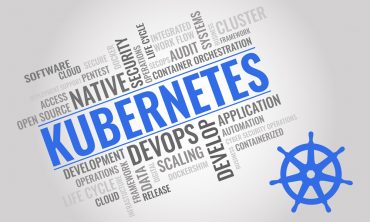
It is in the best interest of companies, regardless of their size or industry, to invest in preventative measures to avoid network outages.
In our interconnected world, users have come to expect fast and stable network connections when using a digital product or service. The same logic applies to any business – especially now that most rely on a continuous network connection to get work done. Should the network fail or go down for even an hour, the consequences can be extremely detrimental: monetary loss, lowered productivity, and data vulnerability. Likewise, network outages have a direct impact on an organization’s revenue, customer retention, and brand.
Keeping a network running during issues is known as network resilience, which is critical to ensuring business continuity. It works at the core and on the edge of infrastructure, preventing disruptions to the customer experience from human error, external issues, or hardware failure. Regardless of the size of an enterprise, if its network isn’t secure and robust, the brand will suffer from downtime. Today, the actual cost of a network outage is much more than just loss of revenue – which is why network resilience is so important.
See also: How IT Can Manage Emerging Risks in a New Era of Work
The cost of a network outage
Last year, an in-depth survey interviewed 500 senior IT decision-makers to discover the real cost of network outages. According to respondents on the most significant impact network outages have on their organizations, 41% stated noticeable drops in customer satisfaction were primary, 34% said that data loss was their chief concern, and 31% held that the financial cost was their greatest loss. If left unchecked and unresolved, all three of these consequences would worsen in severity – potentially ruining a business. To minimize the effects of network outages, organizations need to think in advance about how they can avoid and quickly recover from these situations.
Interestingly, according to network engineers and IT teams, network outages are becoming more frequent and costlier. Over the past five years, 23% of companies reported a 25% increase in network outages, with 39% noting that it took more than a full day to get the network running again. Similarly, in 2020, 31% of companies suffered an outage that caused at least one million USD in damages. These findings indicate that the challenge of maintaining a network is increasing in difficulty. One possible contributor to this rise in complexity is the trend towards remote working and virtualization. While these things boost business flexibility and productivity, they come with a whole litany of variables, including the potential to make a network more susceptible to breakdown and cyber-attack.
After considering recent trends, IT decision-makers are placing network resilience as a top priority; 83% said that it was their number one concern. Already, studies have found that detection and remediation tools enhance security by 48%, save employee time by 45% and reduce costs by 41%.
Why downtime happens
While the movement towards remote work and virtualization is part of the reason why network outages are growing in regularity and complexity, another factor is that networks, in general, are becoming more layered. To support the need for technologically advanced workforces, organizations are building networks like towers of cards – which, while complex – are more vulnerable. ISP carrier issues, fiber cuts, and human error have surged – moreover, network devices themselves are becoming more high-tech. Software stacks too need to be updated more often, creating new susceptibilities to bugs and cyber-attacks, causing the goal of attaining a robust and secure network harder and harder to achieve.
Furthermore, the risk of cyber-crime expanded significantly during the pandemic. Whether it’s cyber-criminals and external bots that probe a corporate network for weaknesses, disgruntled employees who deliberately compromise a network, or good-faith actors who fall victim to a phishing attack, breaches in security led to considerable amounts of network downtime.
Addressing the business network downtime challenge with OOB
Despite the prevalence of outages, they mostly are the result of little to no preventative planning. Additionally, when businesses resolve network downtime, they spend a significant amount of money trying to get engineers out to remote sites. Alternatively, organizations could save themselves time, money, and reputation by leveraging an out-of-band (OOB) network. This solution can operate independently from the main production network and can detect and remediate network issues automatically.
There are several scenarios where out-of-band is incredibly useful. Consider that when there is an error with a network, a business may need to perform a quick system reboot remotely – otherwise, there could be problems with software updates. With a traditional in-band network, devices must be managed through common protocols such as telnet or SSH, using the network itself as a media. However, OOB management provides a wholly separate management plane layer to the network, allowing for quick access and remediation of any affected equipment, even if the system is locked or down from a cyber-attack.
Case in point: a hosting company’s journey to network resilience
The network and its efficient operation are vital to the success of almost every organization operating today. For a leading provider of high-performance hosting and global infrastructure services (notably for in-game hosting and infrastructure), ensuring network resilience was a major business priority. The hosting company runs a complex low-latency network, with thousands of servers spread over more than 35 points of presence on six continents to maintain its global operation. By serving 100 million gamers daily, its network became one of the world’s top-10 most connected hosting provider networks. Its business success depends on the stability of its network.
Nevertheless, maintaining the network wasn’t always easy. Ten years ago, the hosting company struggled to achieve resiliency. It found that its options were limited – not to mention expensive and unreliable – while handling and managing its servers when the internet went down. As time went on, technology advanced considerably along with customer expectations; users demand a high level of network resilience.
During the company’s expansions around the world, finding a solution capable of delivering a reliable means of keeping the network up and running became difficult. Often, the hosting company could not pinpoint issues or access faulty equipment. It needed the ability to manage equipment remotely and the capacity to identify and resolve problems while keeping the network online. The only solution that could accomplish this was out-of-band management. The company found a vendor who provided the tools to support 4G cellular out-of-band connections in all its global locations, which would enable them to save time and money. Working in a partnership with the vendor, they implemented a resilience solution to provide smart out-of-band management to its entire IT infrastructure that also included a 4G failover solution as an Internet connectivity back-up option for all their remote sites.
Today, the hosting company uses a network resilience solution that provides failover and out-of-band management to its routers worldwide. Whenever there is an issue, it can directly connect to its routers without waiting for a network engineer to drive or fly to the location. The organization can stay one step ahead of pending network failures using OOB management and can significantly improve the process of bringing new sites online by using zero-touch provisioning and NetOps automation solutions.
In the same way that a solid network connection was invaluable to the hosting company, the network has become a critical component of today’s business model of efficient operations. Organizations today depend on a stable and reliable network – without a connection, business is not possible. Therefore, it is in the best interest of companies, regardless of their size or industry, to invest in preventative measures to avoid network outages.



























